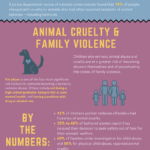In an era where the well-being of pets often takes a backseat, one must ponder: What measures can we adopt to enhance our beloved companions’ health and happiness? This inquiry leads us into an exploration of multifaceted strategies that can bolster the vitality of our pets while fostering an environment of joy and contentment. As responsible guardians, it is incumbent upon us to navigate this complexity and ascertain the most effective methodologies for elevating our pets’ quality of life.
Commencing this discourse requires an analysis of physical health. The cornerstone of any pet’s well-being is a balanced diet tailored to their specific needs. It is essential to understand that not all food is created equal. Dogs, cats, and other pets require nutrients that align with their evolutionary biology. For instance, canines are omnivorous, necessitating a blend of proteins, fats, and carbohydrates. Conversely, felines are obligate carnivores, thriving on high-protein diets. Engaging with a veterinarian to assess dietary needs is an invaluable first step. A personalized nutrition plan can mitigate the onset of obesity, diabetes, and other grave health concerns.
Additionally, one should not underestimate the importance of regular exercise. Physically stimulating activities, whether it be brisk walks for dogs or interactive play for cats, promote cardiovascular health and mental agility. The challenge lies in catering these activities to the individual pet’s preferences and limitations. Engaging pets in activities they find enjoyable can also foster a deeper emotional bond, as the energy expended translates into happiness. For instance, agility training for dogs not only improves their fitness but also enhances their cognitive functions and relieves stress. Yet, how can an owner determine the right balance between exercise and rest? This becomes particularly relevant in older pets, where mobility may be compromised, necessitating the need to adapt exercise regimens while ensuring both health and enjoyment.
Moreover, mental stimulation plays an equally critical role. Pets, much like humans, can suffer from cognitive decline and boredom. A thoughtful approach to enhance their cognitive engagement can prevent such issues. Puzzle toys, interactive feeders, and training sessions that challenge their intellect can serve to keep their minds sharp. By posing an intellectual challenge, owners can cultivate an environment of growth and curiosity. The incentive lies in the immeasurable joy witnessed in a pet mastering a new skill or successfully extracting a treat from a complex toy.
Social interactions cannot be overlooked either. Animals are inherently social beings, and isolation can lead to behavioral issues and stress. Introducing pets to other animals and people can bolster their happiness and confidence. Dog parks and pet-friendly events provide ample opportunities for socialization, but vigilance is paramount. Monitoring interactions to ensure positivity and safety is essential. Ensuring proper exposure also raises the question: how do we introduce a new pet into an established household without inciting jealousy or territoriality? This deserves careful consideration, as the introduction process greatly influences the long-term dynamics of pet relationships.
Furthermore, the environment in which pets dwell significantly impacts their overall well-being. A stimulating and safe habitat requires a holistic perspective—attention to both physical surroundings and emotional ambiance. Ensuring that pets have access to cozy resting spots and, on occasion, an enriching environment with varieties of textures and scents can cater to their sensory needs. Households with multiple pets should consider individualized spaces where each animal can retreat without fear of interruption.
Regular veterinary check-ups are indispensable, yet their importance is frequently underestimated. Many health issues in pets are asymptomatic in their initial stages. Routine examinations can lead to early interventions, which are often less invasive and more cost-effective than treating advanced conditions. Vaccinations, parasite control, and dental care all contribute to sustaining pets’ health. The question arises: how can we ensure that these visits do not become a source of anxiety for our pets? Familiarizing them with veterinary environments through gradual exposure and positive reinforcement is one viable strategy.
A holistic approach to wellbeing also means considering alternative therapies. Acupuncture, massage, and even aromatherapy can substantially enhance pet comfort and health. These modalities, traditionally associated with human care, are increasingly being embraced for our animal companions as they address both physical ailments and emotional distress. However, one must be diligent in employing certified professionals who specialize in these treatments to ensure safety and efficacy.
In conclusion, the onus lies on pet owners to continually raise the bar in the quest to improve their pets’ health and happiness. By educating themselves about proper nutrition, tailoring exercise regimens, enhancing mental stimulation, facilitating social interactions, creating a supportive environment, prioritizing regular check-ups, and considering holistic therapies, pet guardians can cultivate an enriching life for their furry companions. Each of these elements synergistically contributes to a robust and joyful existence for pets, ensuring that they lead vibrant lives filled with love, health, and happiness. As we embark on this endeavor, let us ask ourselves: Are we doing enough for our pets? The answer may lead us down a path of greater understanding and commitment to their welfare.










